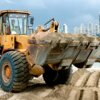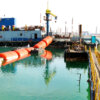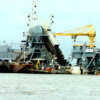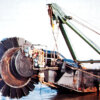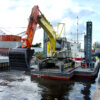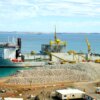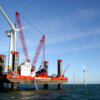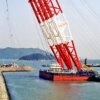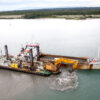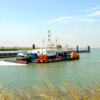2009 | softcover, 62 pp. | CIRIA – ISBN: 978-0-86017-684-8
ESTABLISHING A BASELINE FOR VESSEL VALUATION
Dredging is a capital-intensive industry, often involving only a few main pieces of marine equipment on each project. It is also a civil engineering or marine activity that frequently takes place in an inhospitable environment, where site investigation costs can be high and construction risks are elevated in relation to the working conditions and the potential difficulties of obtaining site information. As a consequence, dredging works tend to be subject to variation, re-measurement and occasionally, disputes relating to valuation. The capital and related costs of equipment and contract values are crucial to the evaluation of these matters.
STANDARD DERIVED FROM REAL DATA
A joint venture between IADC and CIRIA, the publication A guide to cost standards for dredging equipment 2009 offers a benchmark to establish the capital and related costs of various types of dredging plant and equipment commonly in use within the industry.
The 2009 publication is a revision of the original 2005 reference, and was necessitated by the extensive changes in base costs, technological improvements and occupancy. The experiences with the new built values and base costs of larger trailing suction hopper dredgers, cutter suction dredgers and backhoes had to be taken into account. The examples of service hours and occupancy rates needed to be adapted to the actual practice. Furthermore, the Guide adopts a more consistent approach to class notation on wear and tear than the previous 2005 edition.
The 2009 publication is based on the experience and statistics from international dredging contractors who are members of the International Association of Dredging Companies. Prepared by IADC with data exclusively collected for this purpose, the reference gives the replacement value for ex-works, yard or importer – exclusive of VAT – for several types of dredging equipment including – and not limited to – trailing suction hopper dredgers, cutter suction dredgers, boosters, jack-ups and steel pipelines. CIRIA’s collaborative efforts included a study led by an independent steering group comprised of both clients and consulting engineers.
CALCULATIONS REMAIN UP-TO-DATE
As a result of expected market developments, a holistic revision to the publication is not anticipated. To ensure the 2009 publication remains adapted to the current market situation, tables are indexed as needed by the IADC’s Indexation Committee. Released in April 2018, the latest issue of the Annual Indexation ensures the 2009 publication’s calculations will produce accurate valuations. The indexation is based on the Eurostat statistics and values given in the latest publication have been indexed as per 1 January 2018.
WHAT’S COVERED IN COST STANDARDS?
The reference provides a description of the most common dredgers and dredging equipment used as well as the principles and definitions for the standards and cost standard tables. These tables represent calculations on replacement values, depreciation and interest costs as well as maintenance and repair costs for the various types of equipment.
WHO CAN USE THE COST STANDARDS?
This guide supports stakeholders in dredging projects including – but not limited to – consultants, existing and potential clients, project financiers, insurers in assessing these costs. It provides essential information for determining tenders and cost estimates.
HOW TO USE THE BOOK’S CONTENTS
The book is straightforward and user-friendly with a clear introduction, description of the most common dredgers and dredging equipment used, a summary of the principles of cost standards and cost standard tables.
Errata
Readers are advised that the calculations on pages 59 to 61 are incorrect. Click here to read more.





